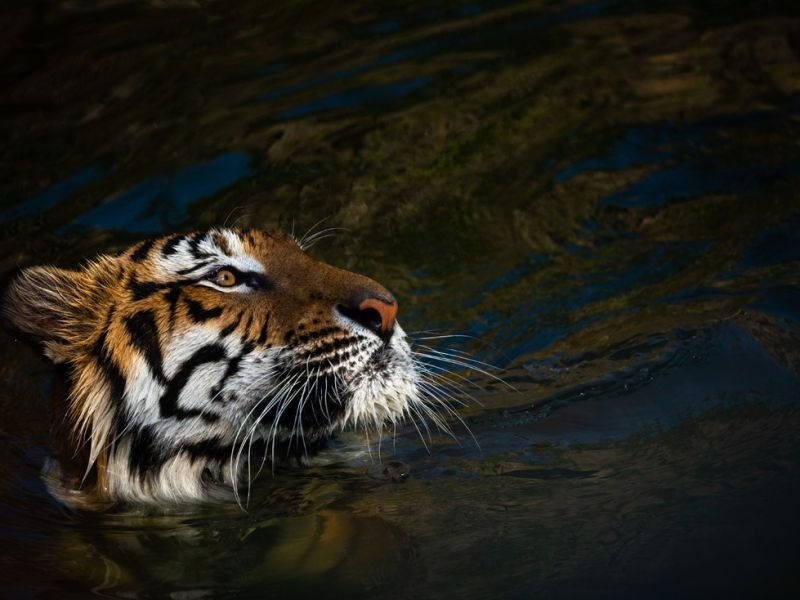Introduction

Wildlife rehabilitation and reintroduction efforts play a crucial role in protecting and preserving endangered species. These initiatives aim to rescue injured or orphaned animals, provide them with medical care and rehabilitation, and eventually reintroduce them back into their natural habitats. Successful stories of wildlife rehabilitation and reintroduction serve as a testament to the dedication of conservationists and the importance of these efforts in maintaining biodiversity and ecological balance. In this article, we will explore some of these success stories from around the world.
The Importance of Wildlife Rehabilitation and Reintroduction
Wildlife rehabilitation and reintroduction programs contribute significantly to the preservation of biodiversity. By rescuing and rehabilitating injured or orphaned animals, these initiatives give them a second chance at life. Once they are fit and ready, they are reintroduced into suitable habitats, where they can contribute to their population’s growth and maintain important ecological relationships.
In addition to preserving species, wildlife rehabilitation and reintroduction efforts also raise awareness about the importance of conservation and the need to protect natural habitats. These programs often involve public outreach and education, which help communities develop a deeper understanding of the challenges faced by wildlife and develop a sense of responsibility in preserving their natural environment.
Successful Stories of Wildlife Rehabilitation and Reintroduction
The Rehabilitation and Reintroduction of Giant Pandas
One of the most well-known success stories in wildlife rehabilitation and reintroduction is the conservation of giant pandas in China. Due to habitat loss and poaching, the population of giant pandas declined drastically, making them highly endangered. However, through focused conservation efforts, including captive breeding and habitat restoration, the population of giant pandas has gradually increased. Today, giant pandas are no longer considered critically endangered, and their population has stabilized.
The Return of Gray Wolves to Yellowstone National Park
The reintroduction of gray wolves to Yellowstone National Park is another notable success story. In the early 20th century, gray wolves were hunted to near extinction in the park. However, in the 1990s, a reintroduction program brought a small number of gray wolves from Canada to Yellowstone. The wolves quickly adapted to their new environment, helping restore the park’s natural balance. Their presence has had a positive impact on the ecosystem, controlling the population of herbivores and improving the overall biodiversity of the park.
Rehabilitation and Release of Sea Turtles
Sea turtles face various threats, including habitat destruction, pollution, and accidental capture in fishing gear. Many organizations and conservationists are involved in rehabilitating injured and sick sea turtles and releasing them back into the wild. These efforts help conserve different species of sea turtles and raise awareness about the importance of marine conservation.
The Success of Orangutan Rehabilitation Centers in Borneo
Orangutans in Borneo face severe habitat loss due to deforestation and illegal hunting. Rehabilitation centers in Borneo provide a safe haven for orphaned and injured orangutans. These centers offer medical care, rehabilitation, and forest school programs to prepare orangutans for eventual release into protected areas. Through the efforts of these rehabilitation centers, many orangutans have been successfully reintroduced into the wild, contributing to the conservation of this critically endangered species.
Animal Competitions and Wildlife Conservation
Animal competitions, such as wildlife photography contests and birdwatching competitions, not only promote outdoor activities and a love for wildlife but also contribute to wildlife conservation. These competitions provide a platform for photographers and bird enthusiasts to showcase the beauty and diversity of wildlife, raise awareness about conservation issues, and support initiatives that protect endangered species and their habitats.
Eco-Tourism and Sustainable Travel for Wildlife Conservation
Eco-tourism activities and sustainable travel options play a vital role in wildlife conservation. These practices involve responsible travel to natural areas, minimizing the negative impacts on the environment, and supporting local communities. By engaging in eco-tourism activities, travelers contribute to the local economy, which incentivizes communities to protect their natural resources and wildlife habitats. Sustainable travel practices also emphasize the importance of wildlife conservation and provide educational opportunities for visitors to learn about endangered species and their conservation needs.
Conclusion
Wildlife rehabilitation and reintroduction efforts, along with activities like animal competitions, ecotourism, and sustainable travel, contribute to the protection and preservation of endangered species. Successful stories from around the world highlight the significance of these initiatives in maintaining biodiversity and raising awareness about the importance of wildlife conservation. By supporting these efforts and participating in responsible outdoor activities, individuals can play a role in safeguarding the natural world and ensuring the survival of diverse wildlife populations.